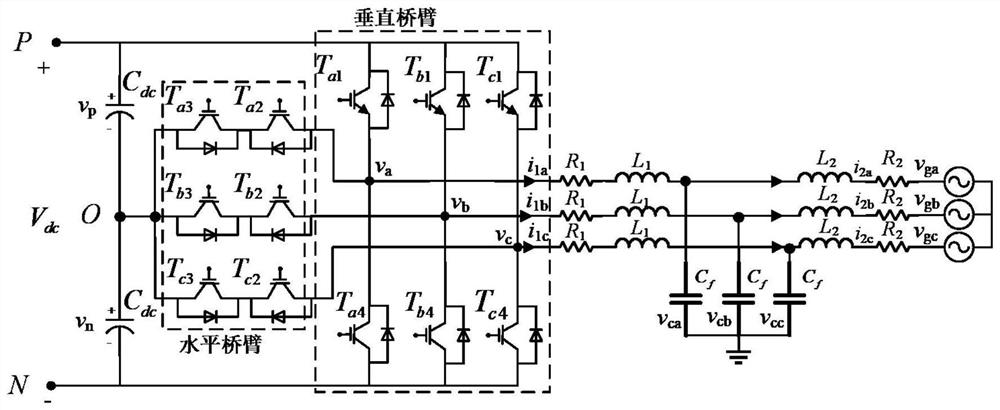Sequential model prediction control method for reducing switching loss of grid-connected inverter
A model predictive control and switching loss technology, applied in AC network circuits, output power conversion devices, and AC power input into DC power output, etc. It can solve problems such as uncertainty, complex design process, and algorithm limitations. Achieve the effect of improving output efficiency, reducing switching loss, and reducing the number of cycles
- Summary
- Abstract
- Description
- Claims
- Application Information
AI Technical Summary
Problems solved by technology
Method used
Image
Examples
Embodiment Construction
[0060] The technical solution will be clearly and completely described below in conjunction with preferred examples of the present invention and accompanying drawings. It should be understood that the preferred examples are only for illustrating the present invention, but not for limiting the protection scope of the present invention. Based on the embodiments of the present invention, all other embodiments obtained by persons of ordinary skill in the art without making creative efforts belong to the protection scope of the present invention.
[0061] The invention provides a multi-objective optimization control strategy for reducing the switching loss of a T-type three-level LCL type grid-connected inverter. Through the analysis of the current path changes brought about by the switching state transition under different directions of the inverter output current, the switching loss model of the inverter is established. In the switching loss model, based on the switching state at...
PUM
 Login to View More
Login to View More Abstract
Description
Claims
Application Information
 Login to View More
Login to View More - R&D
- Intellectual Property
- Life Sciences
- Materials
- Tech Scout
- Unparalleled Data Quality
- Higher Quality Content
- 60% Fewer Hallucinations
Browse by: Latest US Patents, China's latest patents, Technical Efficacy Thesaurus, Application Domain, Technology Topic, Popular Technical Reports.
© 2025 PatSnap. All rights reserved.Legal|Privacy policy|Modern Slavery Act Transparency Statement|Sitemap|About US| Contact US: help@patsnap.com



